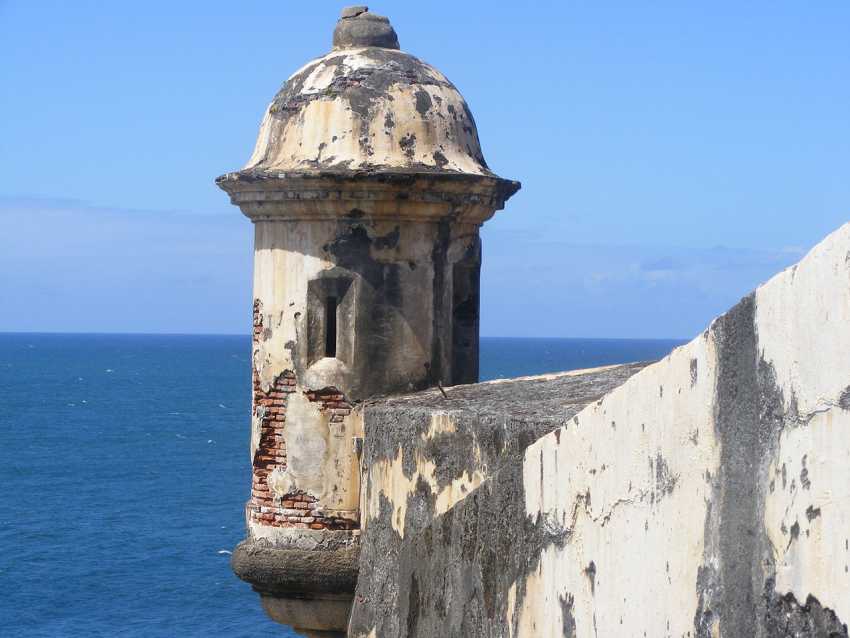
The Castillo San Felipe del Morro, once the most formidable fortification in the Caribbean and its companion Fortín de San Gerónimo del Boquerón that protect the city of San Juan, Puerto Rico, were never taken by force of arms.
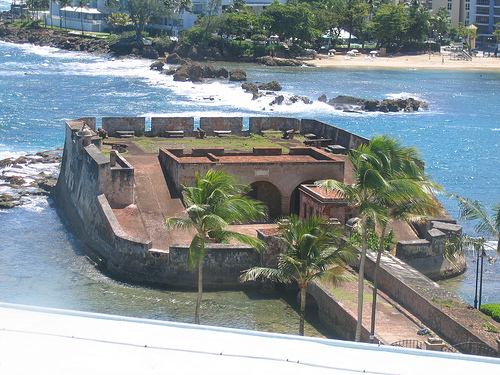
El Morro is a Spanish term meaning "The Promontory" and it is aptly named as it sits on the peninsula that juts out to form the bay and harbor of San Juan. Construction began in 1539 under orders of King Charles V of Spain. In 1587 engineers Juan de Tejada and Juan Bautita Antoneei designed the fortification that stands today. It was based on the principles used in many other forts throughout the Caribbean. Additional structures were added over the next 400 years, to keep up with military technology. Walls that were originally 6’ were by the 18th century, 18’ thick. Ultimately El Morro has six levels that rise 145' above the sea. All along the walls are sentry boxes known as ‘garitas’ which have become a cultural symbol of Puerto Rico.
Throughout the history of Spain’s ‘conquest’ of the Americas, El Morro stood to protect the valuable routes from Mexico, Peru, the Philippines (via Panama) and Columbia. It was the last stop of the treasure fleets before crossing the Atlantic. As such it made for a tempting target for those nations who envied the Spanish hegemony and the riches it brought to Europe and for hundreds of years made the Spanish Empire the most powerful on earth. So naturally there were many attempts to take it.
Sir Francis Drake, the English privateer and his cousin Sir John Hawkins tried on November 22, 1595 with 27 ships and 2,500 men. During the attack Hawkins died on board, off the Puerto Rican coast. Drake abandoned hope and set sail.
Drake developed dysentery during the battle and died off the coast of Panama in January of that same year.
A Dutch fleet tried on September 24, 1625. Although they did burn the city of San Juan, they failed to take El Morro. In fact they found themselves trapped in the harbor that they had so boldly penetrated and then had to run the gauntlet of El Morro's guns to escape.
They left behind a great prize, the 30 gun 450ton Medemblik.
Final casualties: Spanish/Puerto Rican = 17, Dutch = 200
One of the largest British attacks on Spanish territories in the western hemisphere consisted of 13,000 men and an armada of 64 ships commanded by Sir Ralph Abercromby. Although both sides suffered heavy losses, the British suffered one of the worst defeats of the English navy for years to come. The British ceased their attack and began their retreat from San Juan on April 30, 1797.
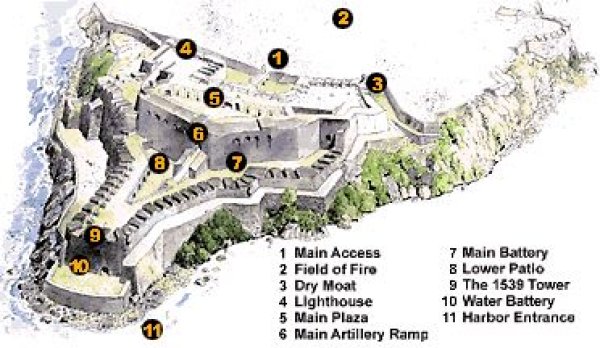
In 1898 during the Spanish American war, the Yanqui fleet under command of Rear Admiral William T. Sampson which included the dreadnaughts USS Iowa and Indiana, 2 monitors, torpedo boats and cruisers, bombarded El Morro three times and blockaded the port of San Juan.
El Morro was severely damaged and so the American battleships turned their attention to San Cristobal, the infantry barracks and some lesser coastal defenses. Casualties were extremely light on both sides. The American fleet sailed off to blockade Havana, Cuba.
The island was later invaded from the opposite side at the town of Guánica in the South, in order to avoid having to storm El Morros' defenses.
When the Spanish surrendered to the Americans and the war ended, the forts were still undefeated.
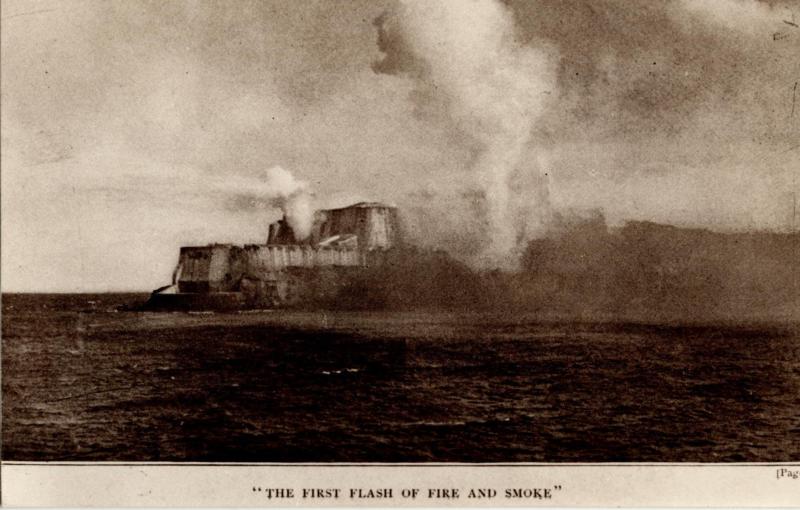
The first shots fired by the U.S. in World War I, came from El Morro when she trained her guns on an armed German supply ship trying to resupply U-Boats waiting off shore.
During World War II the United States Army added a massive concrete bunker to the top of El Morro to serve as a Harbor Defense Fire Control Station tasked with directing the network of coastal artillery sites, and to keeping watch for German submarines which were ravaging shipping in the Caribbean.
The United States Army officially retired from El Morro in 1961. The fort became a part of the National Park Service, to be preserved as a museum.
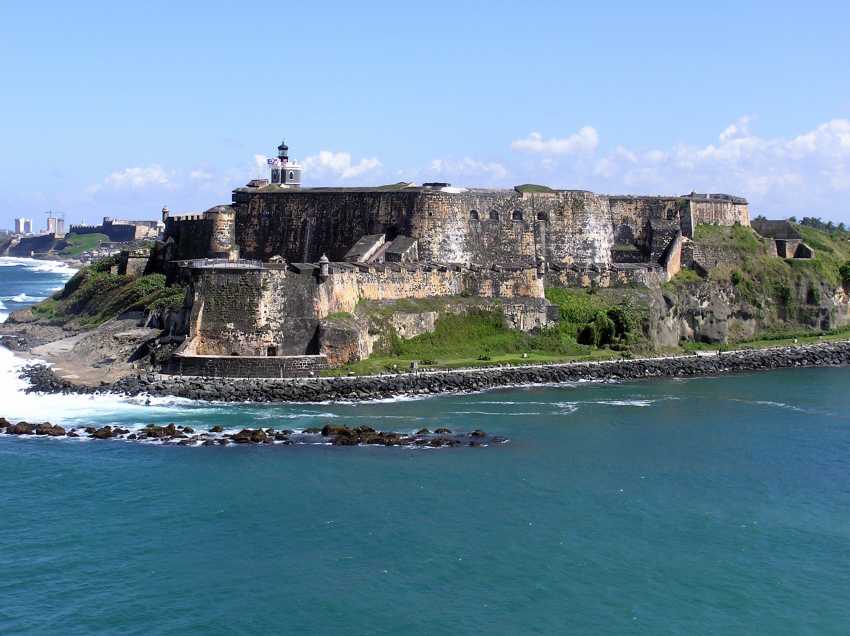
The Castillo and the city walls including San Gerónimo, were declared a World Heritage Site by the United Nations In 1983.
The symbol of Puerto Rico stands to this day and is a badge of honor, un-defeated and proud, welcoming tourists to share in its history.
¡Que Viva Puerto Rico Libre!
Comments